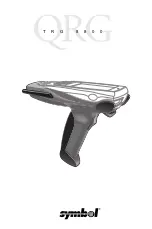
ZEB-REVO Laser Scanner manual
Last updated March 27 2020
Page
11
of
13
Best practice guidelines
The Environment:
In a feature poor environment (e.g. an open field) you’ll ha
ve to augment the
environment with additional features (e.g. boxes, parked vehicles).
○
These features should be repeatedly scanned as the operator passes through the
environment. This can be done by repeatedly pointing the ZEB-REVO in the direction
of the feature. This is particularly important when the feature is at a long range
(>10m).
○
For a feature to be significant the ratio of its size to its range must be approximately
1:10, e.g. at a 5m range for a feature to be significant it must be >0.5m in size.
○
Avoid scanning moving objects (e.g. passing pedestrians or vehicles).
Loop closure:
Make sure to close a loop (when starting at BASE always loop back to the same base).
○
The SLAM algorithm used to process the raw scan data into a point cloud uses a
method that determines a current position by using a previously known position.
○
It is required that the operator starts and ends the survey in the same position to
ensure at least one loop closure. However, it is recommended where possible that the
operator closes the loop as often as possible in order to minimise error and improve
the accuracy of the resulting point cloud.
○
In general, it is better to do circular loops rather than “there and back” loops where
the survey path simply doubles back on itself.
Walking Speed:
It is recommended that data is captured at a slow walking pace to ensure good
coverage and high resolution data. If the forward movement is too fast there may not be enough
repeat scans of features for the SLAM algorithm to be able to process the raw laser data into a point
cloud.
Minimum and Maximum Range:
Data within a small range value is not processed (by default) to
eliminate data from the scanner operator being included in the final point cloud. Avoid close proximity
to walls and ceilings.
○
It is recommended that the range is kept to less than 10m where possible to ensure
good point density and to assist the SLAM algorithm.
Duration of Scanning:
Make sure to save your data before the battery runs out! You can scan for about
15 - 20 minutes before the battery dies. It is recommended to stop the scan and save the data after
about 15/16 minutes because saving itself also takes several minutes. If you do not save your scan in
time, all data will be lost.
○
For very large surveys the project should be broken down into more than one scan
mission. This is to avoid very large file sizes as well as reduce any drift that might be
created in the data. At a slow walking pace, it is possible to cover about 1000 m of
survey distance.
Moving Objects in the Environment:
In some feature poor environments where 3D structure is lacking
in some dimensions, moving objects can have a great impact on the scanning results.






























